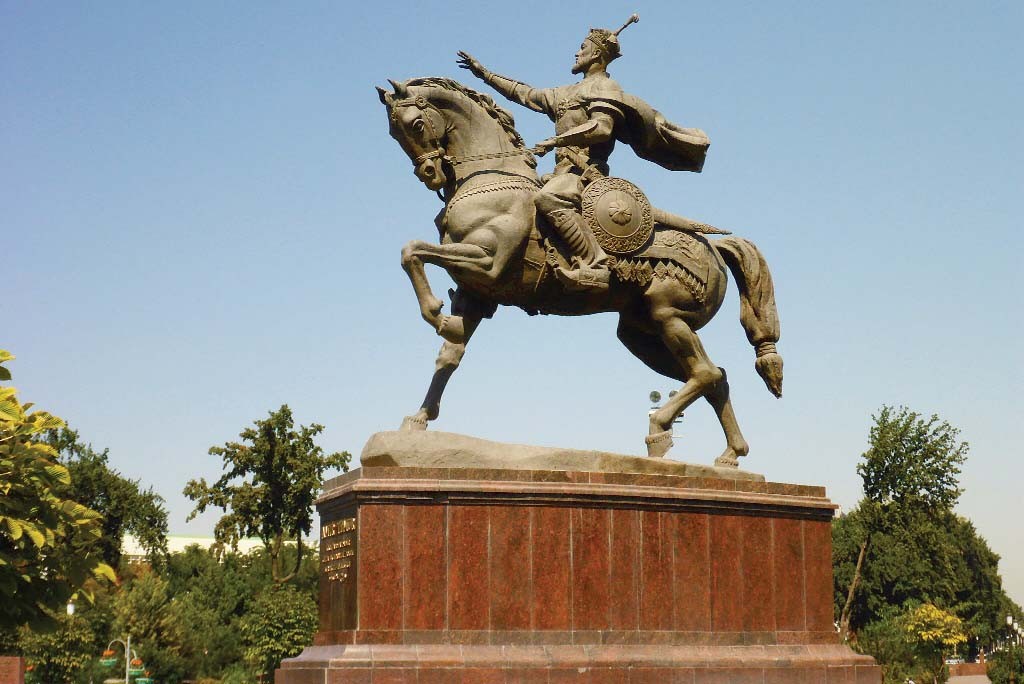
With its magnificent mix of culture and history, the Uzbek capital has the power to dazzle a first-time visitor

Last month, my dream of visiting Central Asia came true when I received an invitation to attend a conference in Tashkent, the capital of Uzbekistan.
Tashkent was a convenient destination for a conference on river-water sharing between Pakistan and Afghanistan. It saved the organisers the hassle of security clearances for the delegates (Pakistan and Afghanistan are cautious in issuing visas to each other’s citizens) and gave them the chance to learn from the efficient water management techniques used in the region and gigantic waterworks installed during the Soviet era.
Although acquiring the Uzbek visa is easy, the real challenge is to book a ticket on Uzbekistan Airways. The two and half hour non-stop Lahore-Tashkent flight is usually overbooked, so one has to be super-efficient to reserve a ticket well in advance. Obviously I wasn’t, which is why it took me nearly 22 hours to reach Tashkent, with an eight-hour layover in Istanbul. When I reached the hotel lobby after the long-haul flight, I could hardly drag my feet, while the smart ones that flew in on the direct flight were fresh and lively.
The Uzbek government is giving extraordinary importance to tourism and is counting on it as an engine of economic growth. No wonder they’ve ensured the immigration process is smoothly run by friendly officers - with no unnecessary questions, no suspicious glances, no scratching of visa stamps and no delay in stamping passports.
Of late, Uzbekistan has emerged as a preferred destination for tourists, companies send their well performing employees on leisure trips there, international events, conferences and exhibitions are held. The drastic devaluation (around 50 per cent) of Uzbek currency against US dollar in 2017 has made the country far less expensive than other destinations. Despite this, and notwithstanding many claims that it compares with Bangkok in facilities, Tashkent is not an alternative to Bangkok.
The stack of currency notes I got in exchange for $100 was a little difficult to handle. My wallet couldn’t take the heavy load (approximately one US dollar equals 8400 Uzbeks Soms) but it took me through the rest of the stay, and also allowed me to bring back locally made chocolates. I had to carry cash because credit cards are generally not accepted in Uzbekistan.
People I met repeatedly told me that Tashkent is just the entry point to the country; the real attractions are Samarkand and Bukhara. They pitied me on hearing my schedule was tight and I wouldn’t be able to visit the two historic cities situated along the ancient Silk Route.
During my four-day stay in Tashkent, and as and when the conference agenda allowed, I enjoyed the city life, cuisine, weather, landscape and hospitality of the people. The tiled walkways and manicured gardens were a treat. One could walk endlessly with no real direction and be lost in the freshness of the air. In many ways the two capital cities of Tashkent and Islamabad are alike, developed and secure, but culturally not as rich as other cities in their respective countries. In fact, Tashkent was rebuilt to a large extent after the earthquake destroyed it in 1966.
Taxis and metro buses have made commuting easy and affordable in Tashkent; provided you can communicate to the locals where you want to go. I carried a pictorial guide and a city map to show my desired destinations to taxi drivers.
Located in the centre of the old part of the city, the covered allays of Chorsu Bazaar are one of the main attractions. One can buy dry fruits, meats, vegetables, grains, fruits, souvenirs and almost everything from stalls managed mostly by women.
Khazrati Imam Complex, comprising multiple structures with turquoise domes, is another must-visit place. It houses the Quran that Hazrat Usman was purportedly reciting at the time of his martyrdom. At the museum in the complex, the visitors can view "Mooye Mubarak" meaning the sacred hair believed to have belonged to the Prophet Muhammad (PBUH).
Other monuments include the Television Tower, the tallest structure in Central Asia; Independence Square; Amir Temur Square that has a seven-metre high bronze statue of the warrior; Amir Temur Museum and a water reservoir built on Chirchiq River. The tourists can also go for hiking, cycling and rafting in Ugam-Chatkal National Park which is about an hour and a half drive from the city centre.
A megapolis with a population of two million, Tashkent has some of the best restaurants, museums, bars and markets. One can enjoy local cuisine, such as plov, shorba, roasted lamb - and also horse sausages. Plov, one of the most famous dishes in Central Asia, is rice with onion, carrots, raisins and lamb meat.
There are a number of restaurants that turn into bars and dance clubs at night where Uzbek and Russian girls perform belly dance and other dance forms. Despite being a Muslim country, wine shops are common and people can buy different varieties, including Vodka, at reasonable prices. It is a common perception that many people from Muslim countries come to Tashkent to enjoy nightlife, drink and party to their hearts’ content and then move on - to Samarkand and Bukhara for religious tourism.